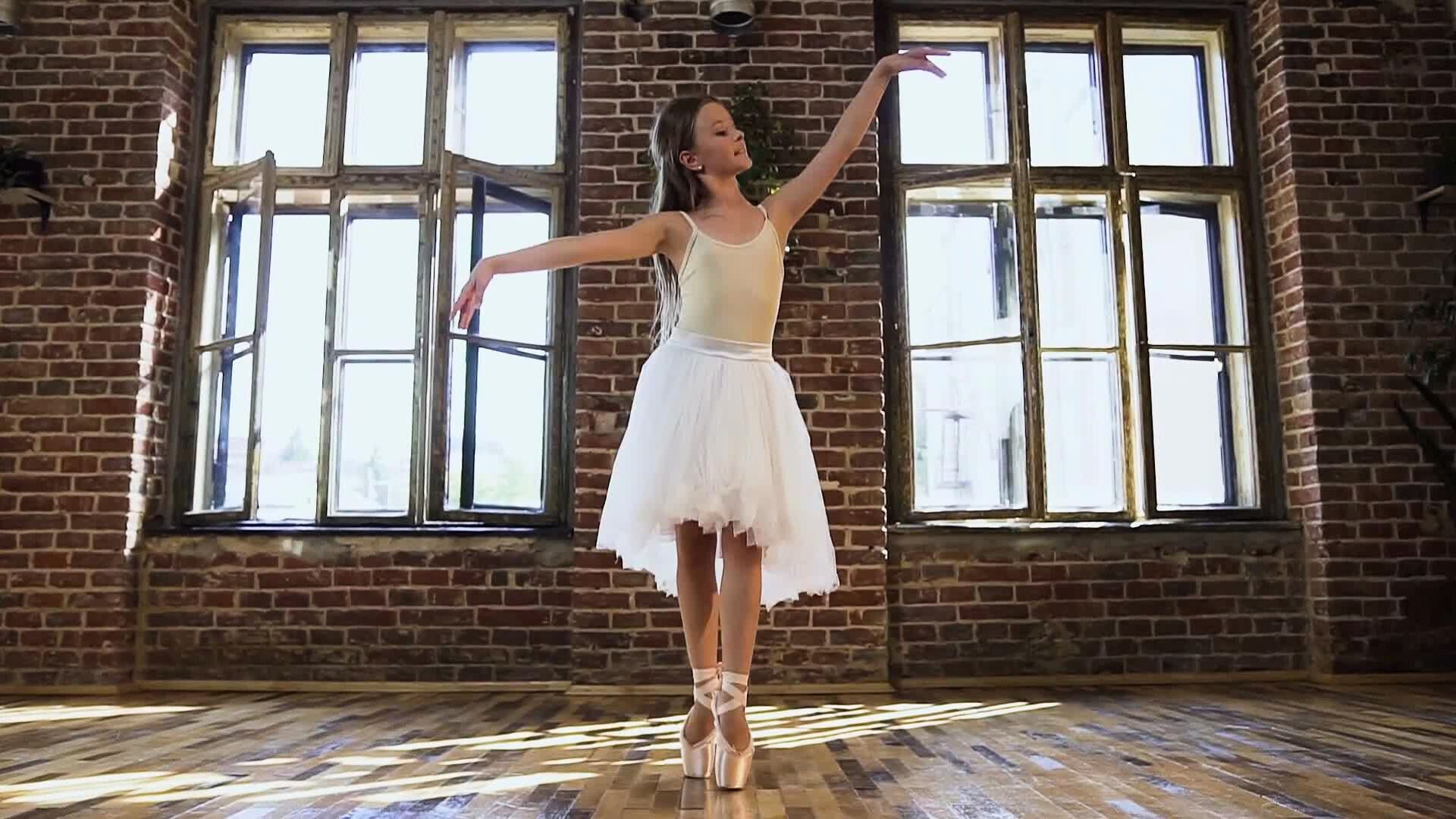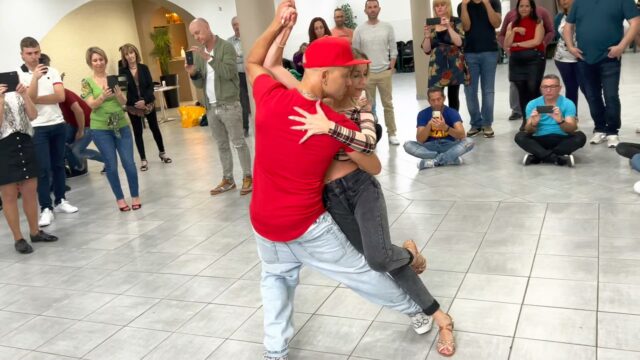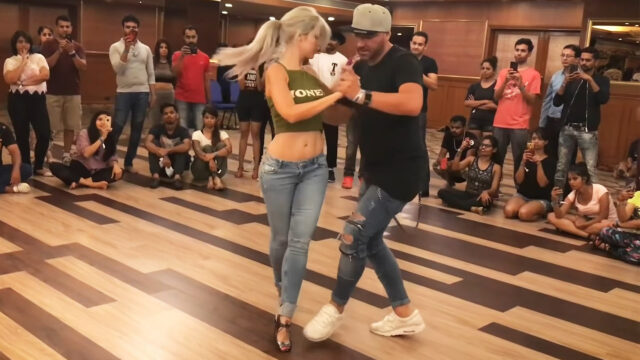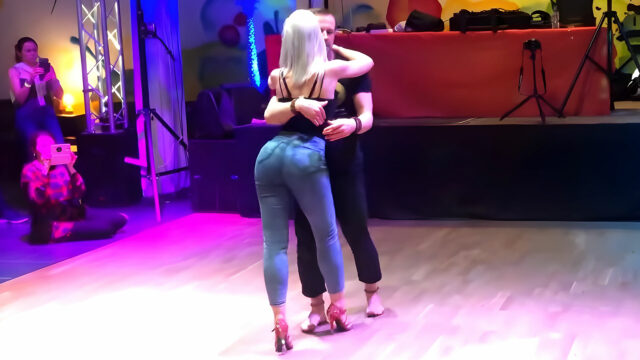Welcome to the ultimate guide on how to create your very own home dance studio that combines functionality, style, and a touch of personal flair. Whether you’re an aspiring professional or simply looking for a dedicated space to enjoy your passion, designing a comfortable and aesthetically pleasing dance environment is now within reach.
Table of Contents
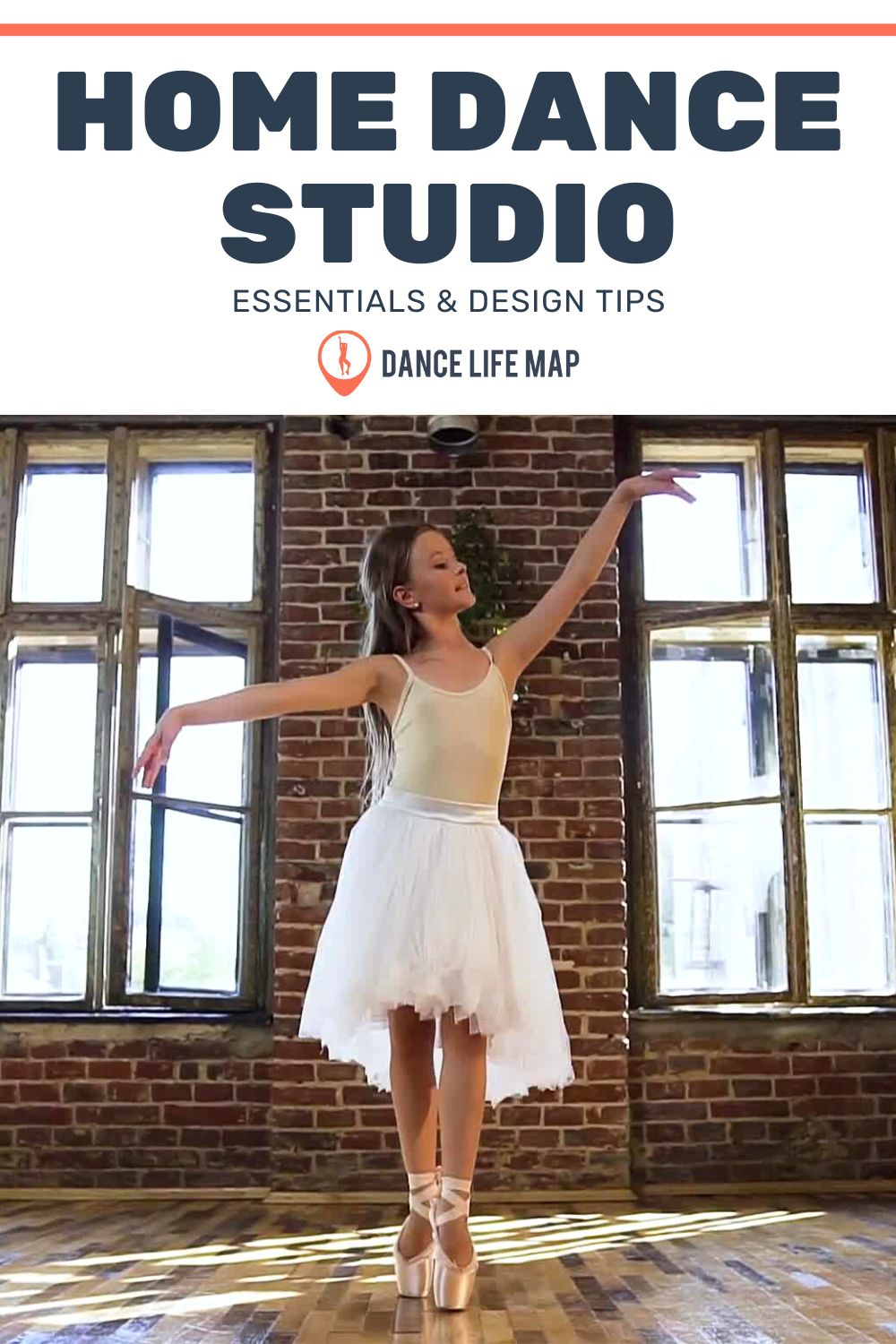
Essential Elements Of Home Dance Studios
An at home dance studio requires adequate space and flooring, mirrors and lighting for proper visibility, a good sound system to play music, ballet barres for strength training, storage solutions to keep equipment organized, and any other style-specific dance equipment that may be needed.
Adequate Space And Flooring
Adequate space and proper flooring are two essential elements for any dance studio. Ensuring that there is enough room to practice comfortably, safely execute movements, and accommodate the specific style of dance being practiced should be top priorities when designing a dance space.
Selecting appropriate home dance studio flooring is equally critical for both comfort and injury prevention. The type of flooring chosen should cater to the specific needs of the dancer’s preferred style – for example, wooden floors may work well for ballet dancers looking for a smooth surface with some bounce, while interlocking tiles could offer more cushioning support needed by those practicing hip-hop or contemporary styles.
Additionally, investing in specialty vinyl (Marley) flooring can provide added protection and durability suited to various types of dance practices while being easier to clean and maintain than other options like wood or concrete floor.
Mirrors And Lighting
Having the proper dance studio mirrors and lighting is crucial for both functionality and aesthetics. Mirrors are an essential tool for dancers, as they allow you to see yourself while practicing, ensuring that you are performing movements correctly and maintaining proper technique.
Opt for full-length, wall-mounted mirrors that span the entire length of at least one wall in your dance space to create a professional feel.
Lighting also plays a significant role in creating an optimal environment for your practice space. Choose bright but diffused lights to avoid harsh shadows that might make it difficult to see yourself clearly in the mirror while dancing.
Track lighting and ceiling spotlights can provide focused light on specific areas within the dance room without causing glare on reflective surfaces such as mirrors or glossy floors.
Incorporating natural light from windows is another option; however, ensure window placement does not cause direct sunlight entering the room, which could lead to undesirable reflections on mirrors during certain times of day.
Sound System
A top-notch speaker system is a crucial component of any home dance studio, as it sets the tone and energy for your practice sessions. When selecting the ideal sound system, consider factors such as audio quality, volume control, and connectivity options to ensure seamless music playback during your dance routines.
Installing proper acoustic materials like wall panels or foam can help absorb excess noise and reverberation while dancing, ensuring an optimal practice environment.
Additionally, you may want to include smart features such as Bluetooth capability or Smart TV with streaming services compatibility to easily access your favorite tunes and playlists during workouts.
Lastly, don’t forget about portability; choosing lightweight speakers or even portable PA systems will allow you to rearrange and configure the setup according to specific needs within your home dance space.
Dance Barres
A dance barre is a horizontal handrail that is commonly used in ballet and other forms of dance. It provides support for dancers during warm-up exercises, stretching routines, and can even be used during performances.
Hinged or adjustable portable barres are often preferred by many people who have their own dance space at home as they can be easily moved around for maximum flexibility.
Having a dedicated ballet barre in your home dance studio can significantly improve your technique and practice sessions. With regular use, you will notice improved balance and stability when performing intricate footwork sequences or pirouettes en pointe.
When choosing a barre for your home setup, consider its length relative to the available space in your room as well as the material used in construction- wood vs metal vs PVC pipe etc- which will affect the feel of the surface being gripped by hands whilst exercising.
Storage Solutions
In a dance studio at home, storage solutions are crucial to keep the space organized and free from clutter. Depending on your available space and the types of dance equipment you have, there are various ways to incorporate storage solutions into your design.
For example, wall-mounted shelves or cubbies can provide ample storage for shoes, resistance bands, and other small items.
It’s important also to consider how the storage solutions fit in with the essential elements of your home dance studio. Dance barres can double as hanging racks for costumes or accessories when not in use.
Other Style-Specific Dance Equipment
In addition to the basic essentials, other style-specific dance equipment is necessary for a home dance studio. For instance to practice pole dancing at home, you will need to invest in a quality pole dancing pole.
You will need to learn more about your preferred dance genre as for example there are two types of pole dancing poles: static and spinning. Static poles are fixed in place and do not spin, while spinning poles rotate around a central axis. The type of pole you choose will depend on your personal preference and skill level.
When choosing a pole dancing pole to practice at home, there are several factors to consider. First and foremost, you want a pole that is safe and secure. Look for poles that have a sturdy base and can support your weight. You also want a pole that is easy to install and can be securely fastened to the floor and ceiling.
In addition to safety and stability, you should also consider the material and finish of the pole. Stainless steel and brass are the most common materials used for pole dancing poles. Stainless steel poles are durable and easy to maintain, while brass poles have a sleek and elegant look. You can also choose from a variety of finishes, including chrome, black, and powder-coated colors.
Another such dance is aerial silks, is a style of dance that involves performing acrobatic moves on long, flowing pieces of fabric. Aerial silks can be a great way to improve strength, flexibility, and overall fitness. However, to practice aerial silks at home, you will need to invest in a set of high-quality aerial silks.
When choosing aerial silks for your home dance studio, there are several factors to consider. First and foremost, you want silks that are strong and durable. Look for silks that are made from high-quality fabric and have a high weight capacity. You also want silks that are easy to set up and can be securely fastened to the ceiling.
In addition to strength and durability, you should also consider the length and width of the silks. Longer silks allow for more movement and flexibility, while wider silks provide more stability and support. You can also choose from a variety of colors and patterns to match your personal style and preferences.
As you can see the are a few things to consider for each dance style, so do a proper research before proceeding with your project.
Design Tips For A Functional And Aesthetically Pleasing Dance Space
Creating dance space at home that is both functional and visually appealing can be challenging, but with these design tips, you’ll have the perfect home studio for daily practice.
Consider Your Available Space And Layout
When designing a home dance studio, it’s crucial to consider the available space and layout carefully. Adequate space is essential for any dancer, as it provides enough room to move without feeling cramped or restricted. It’s especially important when deciding on equipment placement to ensure that there are no obstructions to movements.
Layout is another critical aspect of creating a functional home dance studio. The optimal layout depends on personal preferences and needs, but generally should provide ample natural light and ventilation for comfortable practice sessions.
Noise levels also need careful consideration if sharing walls with neighbors; soundproofing can make all the difference between being able to turn up music or keep playing music at any time of day without worrying about disturbing others in the vicinity.
Use portable barres against one wall by having mirrors opposite them so that dancers can view their form correctly while practicing various exercises like plies or relevés without interruption.
Choose A Theme Or Color Scheme
Choosing a theme or color scheme is an essential aspect of designing a home dance studio. This not only creates a unified and cohesive look but also helps set the right atmosphere for your dance sessions.
For example, if you are into ballet, you can choose soft pastel hues like pink or lavender to create a calming ambiance that complements the graceful movements of ballet dancers.
Using your chosen theme or color scheme throughout your studio space is vital to creating a harmonious vibe. From wall paint colors to furniture accents and decor items like rugs, curtains, and artwork – each element should reflect this central concept.
Incorporate Natural Light And Ventilation
Natural light and proper ventilation are essential elements to incorporate into the design of a dedicated dance space. Natural light can greatly enhance the mood and energy of a room, as well as provide numerous health benefits for dancers.
It is important to consider window placement in relation to the movement of the sun throughout the day, so that harsh sunlight does not interfere with visibility during practice.
Additionally, proper ventilation is crucial for maintaining a healthy environment in which dancers can thrive. This includes choosing windows that can be opened easily and installing a ventilation system to prevent odor buildup and moisture accumulation in the space. A medium sized portable fan with large windows could be a great cost effective solution in the beginning.
Personalize The Space With Inspiring Decor
Make your home dance studio a reflection of your unique personality and style by incorporating inspiring decor. This can include anything from motivational posters, artwork, or even quotes that inspire you to keep pushing yourself towards your dance goals.
You might also consider incorporating colors that energize and uplift you, such as bold shades of yellow or calming blues, if that’s what you are aiming for.
Another way to personalize your home dance studio is by investing in custom-made barres with unique finishes or shapes that complement the overall aesthetic of the space.
This could include sleek metal finishes for an industrial look or warm wooden finishes for a more natural feel.
Optimize The Layout For Functionality And Safety
To create a home dance studio that’s both functional and safe, it’s important to optimize the layout. Start by considering the available space and layout of the room. It’s crucial to have enough free space for your dance moves without knocking over furniture or bumping into walls.
You should also consider incorporating natural light sources and ventilation into your design plan, as proper lighting and fresh air can help prevent injury during intense sessions.
Personal touches like inspiring decor can enhance motivation while portable fans or heaters may make a big difference when trying to maintain an optimum temperature level in the room based on individual preferences.
Maintenance And Safety Practices For A Home Dance Studio
To ensure your home dance studio remains in optimal condition for practicing, it is crucial to practice regular cleaning and sanitizing, proper use and storage of equipment, and injury prevention measures.
Regular Cleaning And Sanitizing
Regular cleaning and sanitizing of a home dance studio is crucial for maintaining a safe and healthy environment. Here are some tips to help keep your dance space clean and hygienic:
- Sweeping or mopping the floor daily to remove any dirt or debris that can cause accidents.
- Disinfecting the dance floor and equipment after each use with appropriate cleaning agents.
- Vacuuming carpets or rugs regularly to prevent dust and allergens from accumulating. Buying robot vacuum cleaner like Xiaomi Roborock product line could be an affordable and effective solution.
- Cleaning mirrors, windows, and other surfaces with disinfectant wipes or sprays.
- Washing ballet shoes, resistance bands, and any other equipment that comes into contact with the body after every use.
- Laundering dance clothes regularly using hot water to kill bacteria and germs.
By following these cleaning practices, you can ensure that your home dance studio remains a safe space for you to practice your skills without worrying about exposure to harmful bacteria or germs from others.
Proper Use And Storage Of Equipment
It is crucial to ensure proper use and storage of equipment in a home dance studio to maintain a safe and functional environment for dancers. This includes regularly inspecting equipment such as dance barres, resistance bands, pointe shoes, and yoga mats for any signs of wear or damage that could compromise their integrity during use.
When not in use, these items should be stored properly in designated areas to prevent accidents and injuries. For example, resistance bands should be hung up on hooks or pegs while ballet shoes should be kept in a dust-free bag or box to prevent them from getting damaged or dirty.
Injury Prevention Measures
Injury prevention is a serious concern for dancers of all levels, including those who practice at home. Some common dance-related injuries include sprains and strains, overuse injuries, and contusions.
To avoid these types of injuries, it’s important to warm-up properly before dancing and stretch afterwards. Additionally, proper technique is essential in preventing injury – paying close attention to body alignment, balance and posture can greatly reduce the risk of injury.
It’s also important to regularly inspect equipment such as barres, mirrors and lighting fixtures to ensure that they are installed safely and correctly, reducing the risk of accidents while you’re practicing your routines.
Benefits Of Having Your Own Dance Studio
Having a home dance studio offers numerous benefits, including convenience, cost-effectiveness, increased practice time, improved health and well-being, and a creative outlet.
Convenience
One of the best things about it is the convenience it provides. No more commuting to and from professional dance studios or dealing with scheduling conflicts that arise from shared practice spaces.
You can practice anytime you want, without worrying about other dancers hogging the space or feeling rushed during your session. Plus, with your own dance studio, you have access to all of your equipment and supplies right at your fingertips.
This means you can spend less time preparing for a class and more time focusing on perfecting your technique and form.
Cost-effectiveness
Having a home dance studio can provide immense cost-effectiveness benefits for dancers. Instead of paying steep rental fees to practice at a professional dance studio, investing in your own space can save you money in the long run.
Additionally, you’ll have the freedom to practice whenever you want without worrying about scheduling conflicts or availability.
In fact, according to research, building a home dance studio is often more cost-effective than renting space at a professional facility. The cost can vary depending on factors such as type of flooring used and whether or not mirrors are installed, but overall it is possible to create a functional and aesthetically pleasing space within reasonable budget constraints.
Increased Practice Time
By building a home dance studio, you can significantly increase your practice time. Without having to commute to a separate studio or wait for class schedules, dancers can practice whenever they want in their own dedicated space.
Instead of only attending scheduled classes at dance studios, this provides the flexibility for daily practice and extra rehearsal time. Additionally, practicing in a familiar environment allows for more focused and productive sessions as the dancer is not distracted by external factors such as other students or unfamiliar surroundings.
Creative Outlet
Having a home dance studio provides many benefits, one of which is having a creative outlet. Dancing has been around for centuries and has evolved into various styles and techniques, making it an excellent form of artistic expression.
A home dance studio allows individuals to freely express themselves without any judgment or criticism. It also provides the opportunity for dancers to experiment with new moves and choreographies in their own safe space.
Conclusion
Creating a home dance studio is an exciting and rewarding project that can benefit both your physical health and mental well-being. With the right essential elements, design tips, and safety practices in place, you can have a functional and aesthetically pleasing dance space in the comfort of your own home.
Remember to consider the available space, layout optimization, color scheme, lighting, mirrors and flooring options when designing your very own dance studio! Taking care of your body with regular practice in your dedicated domain comes with great rewards such as increased convenience for daily practice without leaving the house or paying expensive classes at professional studios.
FAQs:
1. What are some essential elements to consider when designing a home dance studio?
When designing your ideal dance space at home, it is important to consider factors such as flooring material and thickness, mirror placement and size, safety measures, lighting options and temperature control.
2. How much space do I need for a home dance studio?
The amount of space needed will depend on the type of dancing being done as well as personal preferences. However, most experts recommend at least 100 square feet of dedicated floor space for ballet or contemporary style dances.
3. What types of flooring work best in a home dance studio?
Choose between wood or vinyl flooring, both of which have variations suitable for any dance style. Dedicated dance flooring that provides shock absorption and slip-resistant properties works best. This can include materials like marley vinyl or sprung floor with foam padding underneath.
4. Can I convert an existing room into a dance studio without making major renovations?
Yes, an existing room can be converted into a functional home dance studio with minimal renovations by adding mirrors on one wall, installing portable barres alongside walls for balance support and laying down proper flooring material suitable for your chosen style(s) of dancing.
If you enjoyed this article, feel free share it with your friends and let them know what you think about it. Also, consider checking out our most recent posts and stay in touch. Thank you!
